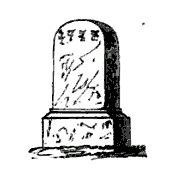
The 15th century was the century which spans the Julian dates from 1 January 1401 (MCDI) to 31 December 1500 (MD).
Year 1402 (MCDII) was a common year starting on Sunday of the Julian calendar.
Year 1403 (MCDIII) was a common year starting on Monday of the Julian calendar.
Year 1421 (MCDXXI) was a common year starting on Wednesday of the Julian calendar.
The 1380s was a decade of the Julian Calendar which began on January 1, 1380, and ended on December 31, 1389.

Year 1410 (MCDX) was a common year starting on Wednesday of the Julian calendar.
The 1420s decade ran from January 1, 1420, to December 31, 1429.
The 1410s decade ran from January 1, 1410, to December 31, 1419.
The 1390s was a decade of the Julian Calendar which began on January 1, 1390, and ended on December 31, 1399.

Year 1413 (MCDXIII) was a common year starting on Sunday of the Julian calendar.
Year 1420 (MCDXX) was a leap year starting on Monday of the Julian calendar.

The Ottoman Interregnum, or the Ottoman Civil War, was a civil war in the Ottoman Empire between the sons of Sultan Bayezid I following the defeat of their father at the Battle of Ankara on 20 July 1402. Although Mehmed Çelebi was confirmed as sultan by Timur, his brothers İsa Çelebi, Musa Çelebi, Süleyman Çelebi, and later, Mustafa Çelebi, refused to recognize his authority, each claiming the throne for himself. Civil war was the result. The Interregnum lasted a little under 11 years, until the Battle of Çamurlu on 5 July 1413, when Mehmed Çelebi emerged as victor, crowned himself Sultan Mehmed I, and restored the empire.
The 1400s ran from January 1, 1400, to December 31, 1409.

Musa Çelebi was an Ottoman prince and a co-ruler of the empire for three years during the Ottoman Interregnum.
The Battle of Kosmidion occurred on 15 June 1410, during the Ottoman Interregnum, and was fought between the forces of the rival brothers, Musa Çelebi and Süleyman Çelebi, at Kosmidion just outside the land walls of Constantinople.

Süleyman Çelebi was an Ottoman prince and a co-ruler of the Ottoman Empire for several years during the Ottoman Interregnum. There is a tradition of western origin, according to which Suleiman the Magnificent was "Suleiman II", but that tradition has been based on an erroneous assumption that Süleyman Çelebi was to be recognised as a legitimate sultan.

İsa Çelebi was an Ottoman prince and a co-ruler of the empire during the Ottoman Interregnum.

The siege of Constantinople of 1411 occurred during the Ottoman Interregnum, or Ottoman Civil War,, when chaos reigned in the Ottoman Empire following the defeat of Sultan Bayezid I by the Central Asian warlord Timur. Although Mehmed Çelebi was confirmed as sultan by Timur after the Battle of Ankara, his brothers İsa Çelebi, Musa Çelebi, Süleyman Çelebi, and later, Mustafa Çelebi, refused to recognize his authority, each claiming the throne for himself. A civil war was the result. The Interregnum lasted until the Battle of Camurlu on 5 July 1413, when Mehmed Çelebi emerged as victor in the strife, crowned himself sultan Mehmed I, and restored peace to the empire.
The Treaty of Gallipoli, concluded in January or early February 1403, was a peace treaty between Süleyman Çelebi, ruler of the Ottoman territories in the Balkans, and the main Christian regional powers: the Byzantine Empire, the Republic of Venice, the Republic of Genoa, the Knights Hospitaller, and the Duchy of Naxos. Concluded in the aftermath of the Battle of Ankara, while Süleyman tried to strengthen his own position in the succession struggle with his brothers, the treaty brought major concessions to the Christian states, especially the Byzantines, who regained lost territories and achieved a position of nominal superiority over the Ottoman ruler. Its provisions were honoured by Süleyman as well as by Mehmed I, the victor of the Ottoman succession struggle, but collapsed after Mehmed's death in 1421.
The Battle of İnceğiz was fought sometime in late 1411 or early 1412 near Constantinople between the rival sons of the Ottoman Sultan Bayezid I, Mehmed Çelebi and Musa Çelebi, during the final stages of the civil war known as the Ottoman Interregnum.







